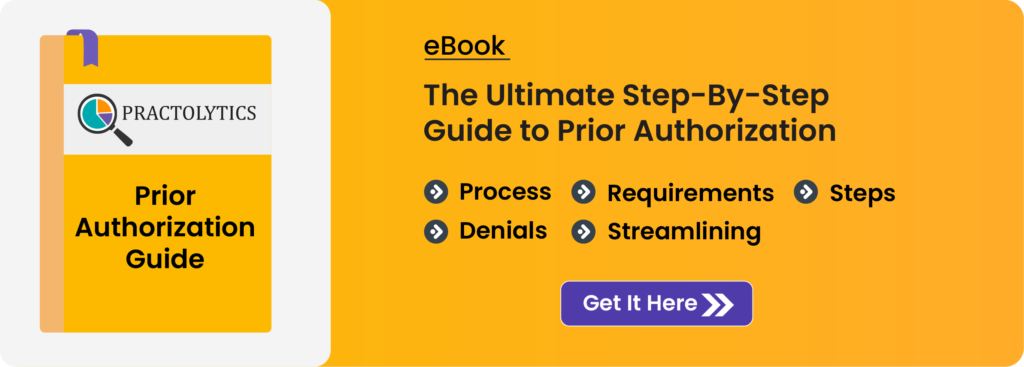How to Minimize Denials Through Effective Pre-Authorization Process
Claim denials continue to be one of the most costly and annoying obstacles in the constantly changing field of healthcare administration. Denials cause cash flow problems, raise administrative costs, postpone reimbursements, and frequently result in unhappy patients. Among the most avoidable reasons why claims are denied? Ineffective or incomplete pre-authorization processes.
How to minimize denails through Pre-authorization process is a procedure where physicians obtain insurance company approval for specific procedures, treatments, or medications. This process ensures that the insurance company approves the treatment before it is carried out. The goals include guaranteeing medical needs and controlling costs. The process is challenging. It’s also time-consuming & error-prone.
Pre-authorization procedures can drastically reduce claim denials. This is fantastic news. They can also protect practices’ revenue.
Real Cost of Poor Pre-Authorization
Before diving into best practices, it’s worth understanding the cost of getting it wrong:
- Denied claims due to missing or invalid pre-authorizations are among the top five reasons cited by payers.
- Rework is necessary for each denied claim, and it typically costs between $25 and $118 for each claim, not adding the effect of delayed cash flow.
- Delays or refusals of care might cause patients to lose faith, which can lead to churn or bad reviews.
With these ramifications, it is now imperative—not optional—to make sure your pre-authorization workflow is tight and compelling.
1. Know the Requirements: Build a Centralized Authorization Knowledge Base
Depending on the process, the type of provider, and even the area where services are provided, each payer has different authorization guidelines. Costly mistakes result from manually recording this or from depending just on staff recollection.
How to Improve:
- Keep a consolidated, current database of payer requirements: document pre-auth requirements, payer-specific guidelines, contact information, turnaround times, and expiration dates. Use spreadsheets, practice management systems, or authorization tools to store this information.
- To keep up with updates, regularly check payer portals or subscribe to alerts.
2. Verify Insurance and Eligibility Early
Verifying insurance coverage alone isn’t enough—you also need to check for authorization requirements attached to a specific policy. Doing this early in the patient intake process gives you the time you need to secure approval.
How to Improve:
- To retrieve insurance and benefit information promptly, use automated eligibility verification systems that are coupled with PMS or EHR software.
- Teach virtual medical assistants (VMAs) or front desk staff to identify services that could need pre-auth and escalate them accordingly.
3. Standardize the Pre-Authorization Workflow
In the absence of a consistent procedure, duties are overlooked. Pre-authorization procedures must be well-defined and reproducible to guarantee that nothing is overlooked.
How to Improve:
- Organize your pre-auth process from scheduling patients to providing services.
- Assign precise roles and duties for completing clinical paperwork, submitting requests, confirming requirements, and following up.
- Use checklists or process management tools to monitor permitted and pending authorizations.
4. Leverage Technology and Automation
Manual pre-authorization is time-consuming, slow, and prone to mistakes. The good news is that technologies that aid in process automation or simplification already exist. These technologies have the potential to simplify the procedure.
How to Improve:
- Utilize pre-authorization automation solutions that enable automated submission and tracking of requests by integrating with payers.
- Put in place EHR-integrated technologies that, as soon as a service is ordered, highlight CPT codes or services that need authorization.
- Consider hiring VMAs with pre-auth process training to handle routine submissions & follow-ups.
5. Ensure Accurate and Complete Documentation
Inaccurate or insufficient documentation is a common reason for denials. You risk having your request rejected if you submit incorrect codes or insufficient clinical justification.
How to Improve:
- Standardize clinical documentation templates. Record all pertinent information, including a diagnosis, prior medical interventions, and imaging results. Ensure that this information is accurately documented.
- Physicians can assign accurate CPT and ICD-N codes with the aid of coding audits and training. These codes align with payer standards.
- Verify each submission one last time before sending it out.
6. Track and Monitor All Pre-Authorization Requests
Insufficient insight into pre-authorization status results in denials, delays, and missed deadlines. To track and keep an eye on each request in real-time, you need a system.
How to Improve:
- Keep track of the patient’s name, service request, date of submission, current status, expiration, and approval number on a pre-auth dashboard or log.
- Assign employees or a specialized VMA to escalate delays and follow up on aging requests.
- To prevent services from being provided on lapsed permissions, set up reminders for expiration authorizations.
7. Educate Staff and Providers Continuously
A united team is essential to a successful pre-authorization process. Every team member must understand how their activities impact approvals and rejections. This includes the billers and front desk staff.
How to Improve:
- Organize training seminars on best practices, denial patterns, and payer changes every three months.
- Promote candid dialogue between the administrative and clinical teams.
- Give employees access to denial reports so they can observe how mistakes affect the actual world.
8. Appeal and Analyze Denials Systematically
There will always be some denials, even with the finest systems. How you react to them is what counts. Recovering revenue and avoiding future problems are guaranteed by a thorough appeal and investigation process.
How to Improve:
- Appeal denied authorizations promptly with supporting documentation.
- Categorize and log each denial reason to identify trends.
- Use denial data to improve training, revise workflows, and work with payers proactively.
9. Engage Patients in the Process
Patients frequently don’t know that pre-authorization is necessary for some procedures. They might accuse the provider when coverage is refused. Misunderstandings can be avoided by educating patients and involving them early on.
How to Improve:
- Inform patients at the time of scheduling if a service requires authorization.
- Encourage them to contact their insurance provider if there are any delays.
- Provide precise information regarding due dates. Also, provide information about possible out-of-pocket costs if authorization is not received.
Conclusion:
Denial reduction starts well before a claim is submitted. A strong pre-authorization process is a preventative measure. It minimizes administrative waste, maximizes patient care, and safeguards revenue.
Simplifying pre-authorization is a best practice. In a time when medical professionals are under pressure to do more with less, it is also necessary. Obstacles can work to your clinic’s benefit. This enables you to increase productivity and streamline procedures. The secret to success is patient involvement. Standardized processes, technology integration, and ongoing employee training are also crucial.
Improve your pre-auth procedure now. This will lead to fewer denials and more revenue.
The revenue cycle management of a healthcare practice can be significantly impacted by claim denials, which are frequently the result of inefficient or lacking pre-authorization procedures. This article examines how putting in place robust, consistent pre-authorization protocols might help providers proactively lower denials. The paper lists nine essential tactics to guarantee more seamless approvals and fewer hiccups, ranging from creating a centralized knowledge base and early insurance verification to utilizing automation, educating employees, and involving patients. Additionally, it highlights the significance of thorough documentation, methodical monitoring, and a proactive appeals process. Practices can improve patient satisfaction and financial performance in addition to cutting administrative expenses and delays by prioritizing pre-authorization. Optimize your pre-auth procedure now to reduce rejections and increase productivity.
Read More – Prior Authorization for MRI
Talk to Medical Billing Expert Today — Get a Free Demo Now!






